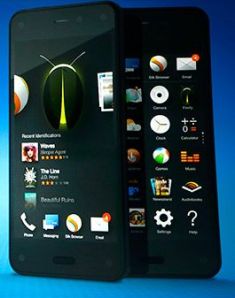On reading the news about Amazon’s Fire Phone and its 3D camera, a couple of thoughts flashed through my mind — like reverse image search and its potential. But the most interesting thought was the key function of the device, to search for products on Amazon’s online store, just by shooting a photo of something you want to buy.
First let’s discuss Amazon’s (late) entry into the highly competitive smartphone business. With giants like Samsung, Microsoft-Nokia and Sony, not to mention the numerous Chinese brands, what chance does Amazon have in the smart phone market? It cannot score on pricing alone.
To answer that, one has to be reminded about the premise for Amazon tablets and wands. These hardware devices are like miniature Trojan horses – nice looking on the outside, low priced, with the real stuff on the inside. The real reason for Amazon to launch Kindle Fire tablets was to sell more e-books, music, movies and TV shows. The loss made from selling low-priced tablets would be offset by profits from content.
It will be the same with the Amazon Fire Phone.
Amazon wants you to use this smartphone to buy products from its online store. But haven’t we heard this before?
The real reason why people bought Apple’s iPhone and the iPod was iTunes and its amazing catalog of content. Steve Jobs went to great lengths to get all the music, movies and TV shows in one place, on the iTunes store — and he made it real simple (and quite affordable) for us to access this content. The other attraction was the App Store, though there were few apps when the first version of the iPhone was launched.
Well, with the Fire phone, Amazon wants to simplify the shopping experience, and make it less time-consuming. So if you want to buy, say the same pair of flip flops as you friend, just get a 3D picture of it with the Fire phone, and send it to the Amazon site.
At the back-end, the site will use reverse image search technology (or humans) to find a match and make suggestions. You will then need to select the product and confirm the purchase.
Very neat!
Speaking of reverse image search technology (using pictures to search pictures). It has been around for sometime, though I doubt many people use it to search images on search engines.
Google offers reverse image search and you can read more about this here: https://support.google.com/websearch/answer/1325808?hl=en
And there are companies like TinEye Services that offer image recognition technology: http://services.tineye.com/
Amazon’s image recognition system is call FireFly.
So instead of typing keywords to search images, just upload an image that suggests what you are looking for — and the search engine will find similar images.
Great for high school projects!


You must be logged in to post a comment.